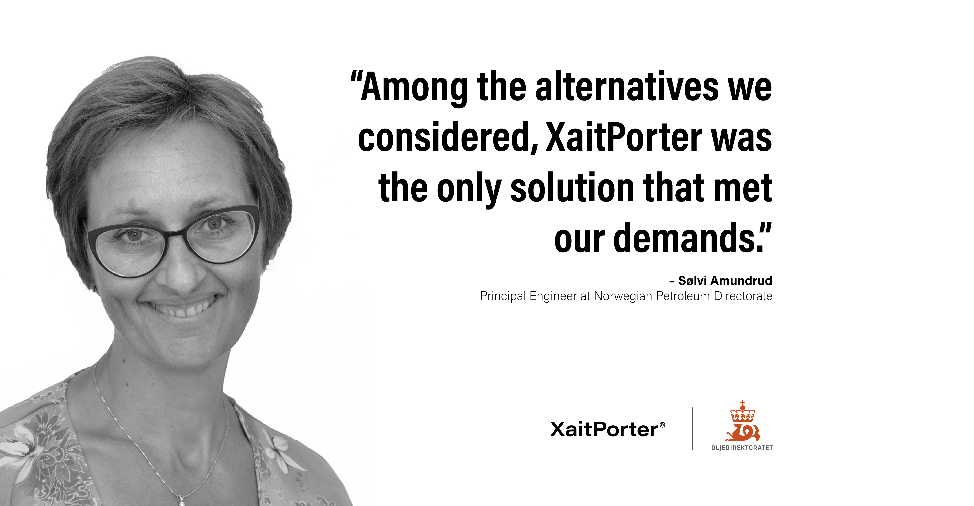Norwegian Petroleum Directorate uses XaitPorter to streamline their internal workflows and maintain a high level of quality across their organization.
Read full customer story hereKristian Lie-Bjelland
kristian.lie-bjelland@xait.com
Software
LET'S TALK!
We offer software that makes you win big and ultimately gives you the work-life balance you deserve.

XaitPorter
Co-authoring and automation solution for complex documents

XaitCPQ
Quickly and accurately price combinations of interdependent products and services
XaitProposal
Guided proposal creation for comprehensive, winning proposals
XaitRFI
The smarter way to respond to RFIs, DDQs and security questionnaires
XaitWebProposal
The easiest way to create interactive and custom mini-websites

XaitAI
The X factor for analyzing and writing winning bids and proposals
Industry
OUR SOLUTIONS BY INDUSTRY
Do you have a question about your business vertical?
Blog
Blog
Bids and Proposals
Learn how to write, manage and master bid and proposals individually and as a team
CPQ and sales automation
Learn what CPQ is and how it can transform your quote and order process
Tenders and RFPs
Learn how to navigate, plan, respond and win tenders and RFPs
Document automation and co-authoring
Learn how to leverage technology and best practices to accelerate and increase quality in complex document production.
Resources
RESOURCES
Discover all our Xaiting resources!
About us
LET'S TALK
We can challenge mindsets and make significant changes to the way people interact
Norwegian Petroleum Directorate uses XaitPorter to streamline their internal workflows and maintain a high level of quality across their organization.
Read full customer story here
Client
Region
Norway
Industry
Government Administration
Company size
100+
Solution
XaitPorter
The Norwegian Petroleum Directorate is a governmental specialist directorate and administrative body. Established in 1972, they report to the Ministry of Petroleum and Energy. Their headquarters are in Stavanger, and a second office is in Harstad. The total number of employees is around 2o0.
Through efficient and responsible resource management, the Norwegian Petroleum Directorate is dedicated to maximizing the value of oil and gas activities for Norwegian society. In this work, health, safety, the environment, and other sea users are important considerations.
A team-based organization, the Norwegian Petroleum Directorate consists of around 70 teams. Each has a specific mandate and area of responsibility.
The Norwegian Petroleum Directorate (hereafter referred to as NPD) prepares reports on various aspects of petroleum activities. The Resource Report, published every other year, is one of the most important reports. It is typically about 60 pages long and contains a lot of data, graphs, images, and intricate layouts.
Sølvi Amundrud, Principal Engineer at NPD and a member of the Analysis Team, explains how co-authoring large, complex reports can be challenging because of their rotating team structure.
“Since we have rotating and multidisciplinary teams, the reports are almost always written by a new constellation of people every time. Multiple contributors are involved in each document.”
Previously, NPD wrote reports using Word, and they had trouble managing access, saving files, correctly referencing and cross-referencing, tracking version history, and getting formatting and layout right. There were frequent system crashes.
Basically, they had to deal with all the challenges that come with trying to create high-stakes documents with the wrong tools.
The need for a good version history system was particularly pressing:
“With so many people working on the same document, we need to be able to track changes. Word has a good system for this, but if you can’t open the right version, you can’t keep track of what changes have been made. It gets even messier when the document crashes and you can't save your work.”
Read the full customer story below to discover how XaitPorter helped Norwegian Petrolum overcome these challenges.
Read full customer story